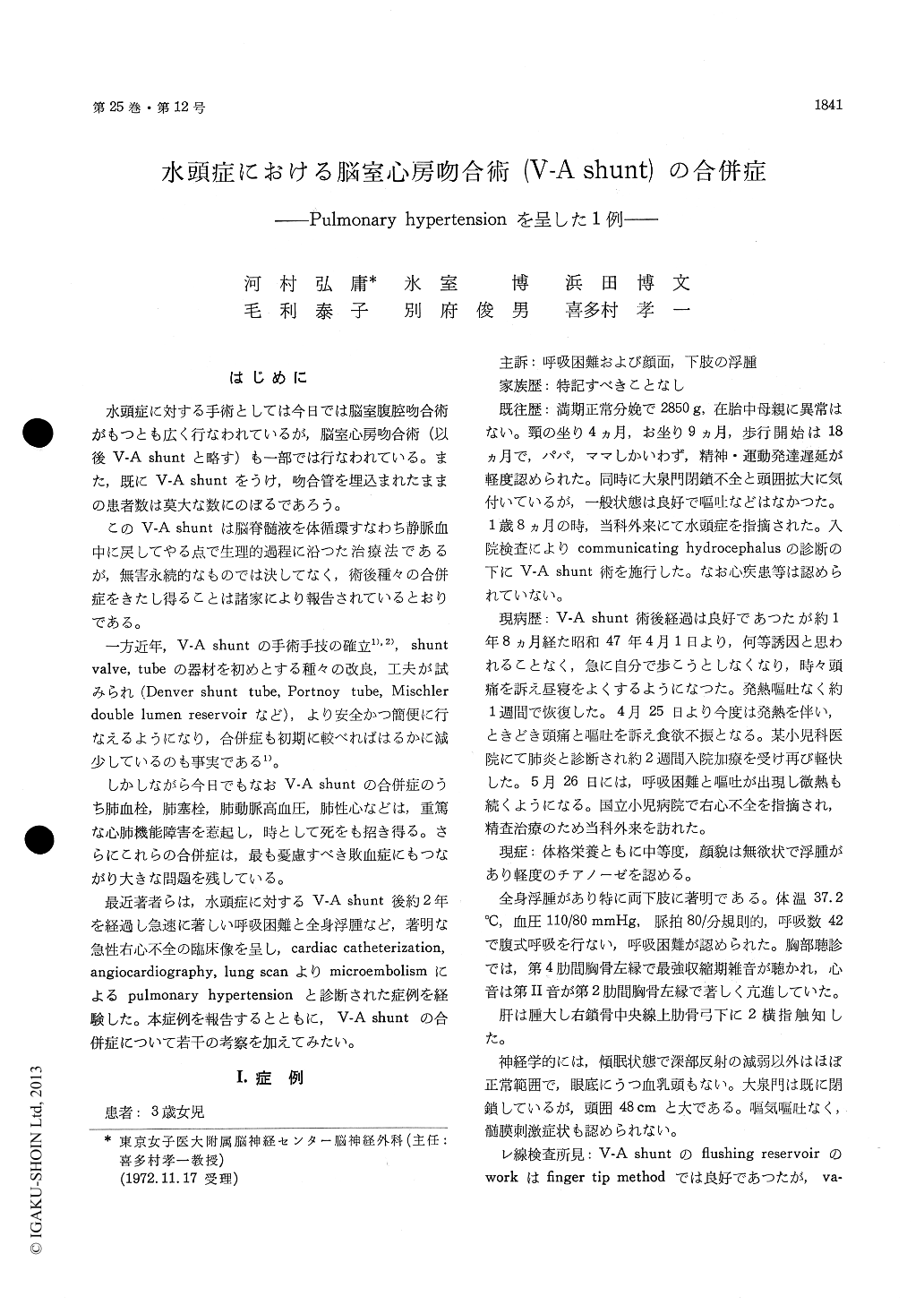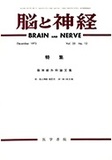Japanese
English
- 有料閲覧
- Abstract 文献概要
- 1ページ目 Look Inside
はじめに
水頭症に対する手術としては今日では脳室腹腔吻合術がもつとも広く行なわれているが,脳室心房吻合術(以後V-A shuntと略す)も一部では行なわれている。また,既にV-A shuntをうけ,吻合管を埋込まれたままの患者数は莫大な数にのぼるであろう。
このV-A shuntは脳脊髄液を体循環すなわち静脈血中に戻してやる点で生理的過程に沿つた治療法であるが,無害永続的なものでは決してなく,術後種々の合併症をきたし得ることは諸家により報告されているとおりである。
The purpose of this paper is to call attention to the possible risk of fatal pulmonary hypertension, a rare pediatric subject, as a complication of theventriculoatrial shunt procedure.
This patient was first seen at our hospital at the age of 2 without any abnormality except for an enlarged head in Aug. 20, 1970. Hydrocephalus became progressive and a V-A shunt was carried out in Aug. 27, 1970. About 2 years later, she was admitted with rapid respiration, generalized edema and disturbed consciousness (lethalgic). Chest roentgenograms at this time showed marked cardiac enlargement and revealed displacement of the ventricular catheter tip at the level of Cs. The electrocardiogram demonstrated P pulmonalae, right axis deviation, and right ventricular hyper-trophy. The possibility of a right atrial thrombus and of pulmonary edema was considered, and cardiac catheterization and angiocardiogram were carried out.
These studies demonstrated marked elevation of pulmonary arterial pressure without gross pulmo-nary thrombi. The diagnosis of acute pulmonary hypertension due to microthrombosis in pulmonary circulation was made. The V-A shunt tube was removed and she was digitalized, given oxygen and injection of antibiotics and of fibrinolytic enzyme.
Fortunately, the sign of right heart failure gradually deminished 2 weeks after the second hospitalization. In addition, the authors have briefly discussed various complications of V-A shunt procedure for control of hydrocephalus and re-viewed some comparable reports.

Copyright © 1973, Igaku-Shoin Ltd. All rights reserved.


